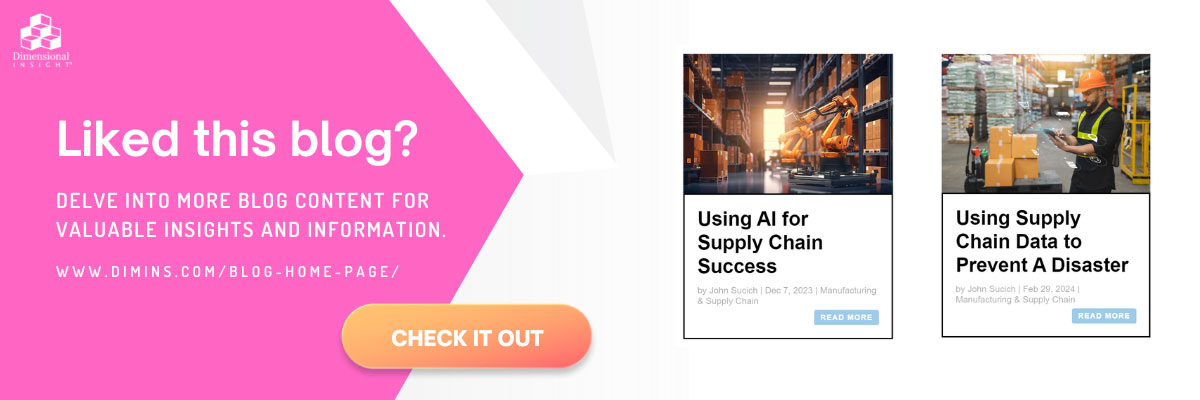In mid-May, the Federal Reserve Bank of New York announced that it was going to start including Supply Availability Indexes (SAIs) as part of its monthly regional business surveys. The SAIs are meant to help measure how widespread supply disruptions are, provide an understanding of whether availability is improving, and track inflationary pressures and the impact on local firms.
The SAIs can be used with the New York Fed’s Global Supply Chain Pressure Index (GSCPI) to compare trends in the United States to international supply chain availability. The work being done by the Federal Reserve Bank of New York is indicative of what happens everywhere when it comes to supply chain metrics. It isn’t just one figure that organizations use when turning to analytics to help with decision-making. As a result, they need an analytics solution that can integrate many different sets of data in order to be successful.
GSCPI metrics
The Federal Reserve Bank of New York’s GSCPI looks to provide a comprehensive summary of potential supply chain disruptions by integrating a number of commonly used metrics. Among the data are global transportation costs, airfreight costs, and manufacturing firm components from the United States, China, Japan, South Korea, Taiwan, and many countries in Europe.
The New York Fed developed the GSCPI to gauge the importance of supply constraints with respect to economic outcomes. It cites research that shows changes in the GSCPI are associated with goods and producer price inflation in the United States and the euro area. This was brought to everyone’s attention in 2020 during the pandemic, but their data tracks it back to 1997. The information is helpful for organizations if there is some kind of change to business proceeding as usual.
Integration
For organizations using the GSCPI, it is just one piece of a much larger puzzle. The Federal Reserve Bank of New York is integrating its own data sets to come up with its index, and that final index becomes one data point that organizations are integrating into their own systems.
Organizations are tracking information that is specific to their business needs. They could be tracing the steps of their supply chain to ensure efficiency or in an effort to become more sustainable, or they could be tracking items to see where they are in the manufacturing process. Some of the information is used to make predictions, while some of it offers real-time information that the organization can then share with customers. All of it needs to be brought together to make sure everyone is staying informed and has the most current information in the easiest way possible.

Data integrity
One important step is making sure the information from all of these different sources is readily available to everyone who needs it. Another important step is making sure that the information isn’t changing along the way. That data integrity means everyone who is looking at the information from disparate sources is still looking at the same information without any corruption in the process.
That information comes from a lot of work put into the beginning of a process that could even possibly pre-date the idea that the information could eventually be integrated with other systems. Ideally, stakeholders got together before the data gathering started to decide which information would be most important to the decision-making process. With countless possibilities when it comes to data collection, organizations need to focus on what data is most relevant to the reports they are looking to put together. Different departments and possibly different organizations along the supply chain are all conducting this same process when it comes to data collection. When all of the different end results are brought together, it is important that the business intelligence solution maintains the initial intent of all of those parts of the organization so that everyone is on the same page.
Often, the larger a company, the more siloed its data. If a company is spread wide across the globe, there is a better chance that its information is housed in different departments, all of which could have different technology systems. If a company can’t integrate that data, it could be wasting time by doing the same thing over and over again at different sites or, worse, using different data at different locations without even knowing it, resulting in information that no one can trust.
Integration allows for a single source of truth in data that everyone can trust. That can apply to the compilation of data to produce an index that becomes a data source for other organizations, the way the Federal Bank of New York provides information, or it could be the way decisions are made by a company looking to make its supply chain run efficiently. In either case, organizations need to make sure their analytics solution is able to handle their data, no matter what source it is coming from.
- What Data Can Bring to California’s Investment in its Ports - July 25, 2024
- Unlocking the Power of Data in the Utilities Industry - July 18, 2024
- How Analytics Can Help Your Wholesale Nursery Grow - July 17, 2024




